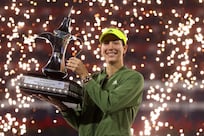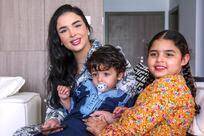Dear Ali: I have a few questions regarding the Middle East. My business partner and I are getting into the publication of children's books aimed at the region. In connection with these books, we wanted to know: 1. What kind of kandura do young boys wear in the region? We understand that the UAE, Saudi Arabia, Qatar etc have different kanduras, but is there an accepted general design that can be pan-Middle Eastern? 2. Is there a general ghutra colour for young boys in the region? 3. Camels in the desert have a cloth on their backs. Does the cloth differ across countries such as the UAE, Saudi Arabia etc? Thanks a lot for your advice and help. SC, Dubai
Dear SC: This is tricky, because as much as we’re similar to each other here in the Gulf region, at the same time we have a lot of pride and probably extra pride in the way we prefer to showcase and present our identity, especially when it comes to our dress code.
The kandura worn in each GCC country is completely different from every other GCC country. To expats, I know they probably all look identical, but to us, they are completely different.
We have a general design that is accepted by Arabs, however, I don’t think many would agree with me, because again we are referring to Arabs, one of the most patriotic groups when it comes to their land and identities. This means that many Arabs would not be happy to see another country’s kandura being worn instead of their own signature kandura.
The solution to this? Easy my friend: simply use various types of kandura in your drawings and sketches. Remember, the small “tarboosh”, which is the extra piece that looks like a tie at the front of the Emirati or Omani kandura, are also different in size. They may look the same and have the same meaning, but they do have their own unique qualities.
In terms of the ghutra, the headgear also varies from country to country, but you may always go with the “esama” or “hamdaniyah” style of having the piece of cloth wrapped around the head, which is used by a lot of young people in the region. In terms of colours, don’t worry. All colours are personal choices, so you may have a white one, a red chequered one or a darker colour. With regard to the camel mat on top of their backs, it shouldn’t be a big deal if you use the signature Emirati one or the Saudi example, because not many would really be aware of the difference, except those people who are into camel herding. I hope this helps. And by the way, “Ali” is a perfect name for your book’s hero.
Ali Al Saloom is a cultural adviser and public speaker from the UAE. Follow @AskAli on Twitter, and visit www.ask-ali.com to ask him a question.
weekend@thenational.ae
Follow us @LifeNationalUAE
Follow us on Facebook for discussions, entertainment, reviews, wellness and news.









